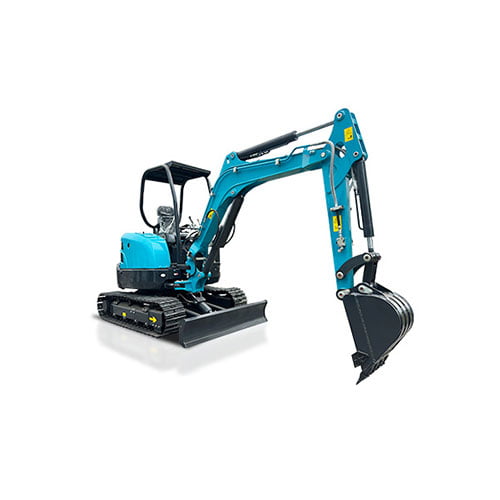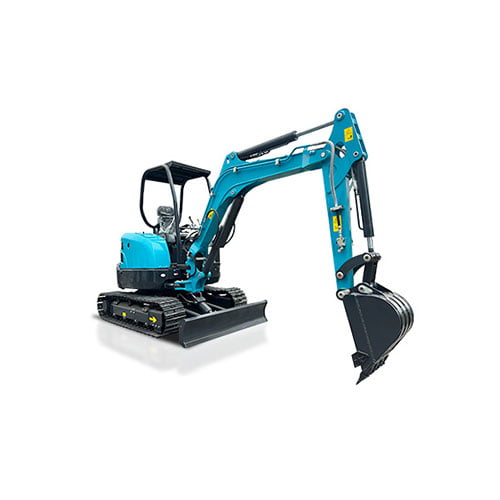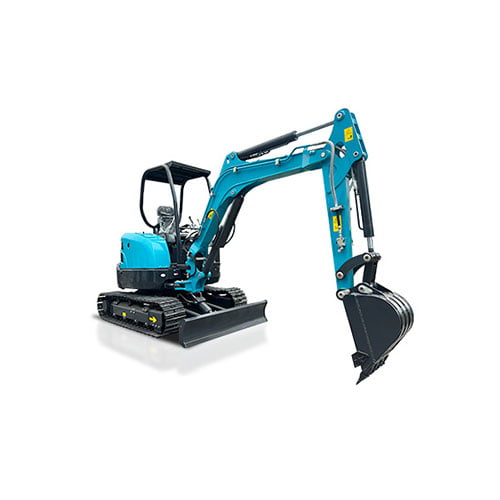Introduction
Excavators are essential pieces of machinery in construction and excavation projects. They come in various sizes and types, with midi and mini excavators being two popular categories. Understanding the differences between midi and mini excavators can help you make an informed decision when selecting the right equipment for your needs. In this comprehensive guide, we will explore the key differences between midi and mini excavators, their respective advantages, and their applications in various industries.
Key Differences Between Midi and Mini Excavators

1. Size and Weight
Understanding Excavator Size
Size and weight are crucial factors that differentiate midi and mini excavators. While both types offer versatility and maneuverability, their dimensions and capacities vary significantly.
Midi Excavator:
- Weight Range: Typically between 5 to 10 tons.
- Dimensions: Larger than mini excavators but smaller than full-sized excavators.
Mini Excavator:
- Weight Range: Usually between 1 to 5 tons.
- Dimensions: Compact and designed for tight spaces.
Impact of Size on Performance
- Midi Excavators: Offer greater digging depth and reach, suitable for medium to large-scale projects.
- Mini Excavators: Provide excellent maneuverability in confined areas, ideal for smaller jobs and urban environments.
2. Digging Depth and Reach
Comparing Excavation Capabilities
The digging depth and reach of an excavator determine its effectiveness in performing various tasks. Midi and mini excavators differ in their excavation capabilities due to their size and design.
Midi Excavator:
- Digging Depth: Generally up to 5 meters.
- Reach: Longer reach compared to mini excavators, allowing for deeper and wider excavation.
Mini Excavator:
- Digging Depth: Typically up to 3 meters.
- Reach: Shorter reach, suitable for shallow excavation and precise work in tight spaces.
Choosing Based on Project Needs
- Midi Excavators: Ideal for larger excavation projects requiring significant depth and reach.
- Mini Excavators: Best suited for tasks with limited space or requiring precision and control.
3. Operational Efficiency and Maneuverability
Evaluating Operational Efficiency
Operational efficiency includes factors such as speed, fuel consumption, and ease of use. Both midi and mini excavators have unique features that impact their operational performance.
Midi Excavator:
- Speed: Faster in covering ground due to larger size and power.
- Fuel Consumption: Higher fuel consumption due to larger engine size.
Mini Excavator:
- Speed: Slower but more precise in confined spaces.
- Fuel Consumption: More fuel-efficient due to smaller engine size.
Maneuverability and Ease of Use
- Midi Excavators: May be less maneuverable in tight spaces but offer greater power for larger tasks.
- Mini Excavators: Highly maneuverable, making them suitable for urban projects and small work areas.
4. Cost and Investment
Comparing Costs
Cost is a significant factor when choosing between midi and mini excavators. The initial investment and operating costs can vary based on the size and features of the excavator.
Midi Excavator:
- Initial Cost: Higher due to larger size and increased capabilities.
- Operating Costs: Generally higher, including fuel, maintenance, and repair.
Mini Excavator:
- Initial Cost: Lower, making it a more budget-friendly option.
- Operating Costs: Lower due to smaller engine and reduced fuel consumption.
Evaluating Return on Investment
- Midi Excavators: Suitable for larger projects where the investment can be justified by the increased productivity.
- Mini Excavators: Ideal for smaller projects or businesses with budget constraints.
5. Applications and Use Cases

Common Applications for Midi Excavators
Midi excavators are versatile machines used in a variety of applications. Their larger size and capabilities make them suitable for more demanding tasks.
Applications:
- Construction Projects: Excavation for foundations, roadworks, and utility installations.
- Landscaping: Large-scale land grading and preparation.
Common Applications for Mini Excavators
Mini excavators are designed for tasks that require precision and access to confined spaces. They are commonly used in urban settings and smaller projects.
Applications:
- Residential Projects: Small-scale landscaping, trenching, and digging.
- Utility Work: Installation and maintenance in tight spaces.
Table: Comparison of Midi and Mini Excavators
| Feature | Midi Excavator | Mini Excavator | Description |
|---|---|---|---|
| Weight Range | 5 to 10 tons | 1 to 5 tons | Indicates overall size and capacity. |
| Digging Depth | Up to 5 meters | Up to 3 meters | Maximum depth the excavator can reach. |
| Reach | Longer reach | Shorter reach | Distance the excavator can extend. |
| Operational Speed | Faster | Slower | Speed of operation. |
| Fuel Consumption | Higher | Lower | Fuel efficiency of the excavator. |
| Initial Cost | Higher | Lower | Purchase price of the excavator. |
| Operating Costs | Higher | Lower | Ongoing costs for operation and maintenance. |
| Typical Applications | Large construction projects, land grading | Residential and utility work, small-scale projects | Common uses based on size and capabilities. |
Conclusion
Choosing between a midi and mini excavator depends on various factors, including the scope of your projects, budget, and specific requirements. Midi excavators offer greater power and capability for larger tasks, while mini excavators excel in maneuverability and precision for smaller projects. Understanding the differences in size, operational efficiency, and applications will help you select the right equipment to meet your needs effectively.
FAQ: Common Questions About Midi and Mini Excavators
1. What are the main differences in size between midi and mini excavators?
Midi excavators typically weigh between 5 to 10 tons, making them larger and more powerful compared to mini excavators, which usually weigh between 1 to 5 tons. The size difference affects their digging depth, reach, and overall operational capability.
2. How does the digging depth compare between midi and mini excavators?
Midi excavators generally offer a digging depth of up to 5 meters, whereas mini excavators can reach depths of up to 3 meters. The greater depth of midi excavators makes them suitable for more extensive excavation tasks.
3. Which type of excavator is more fuel-efficient?
Mini excavators are generally more fuel-efficient due to their smaller engine size. They consume less fuel compared to midi excavators, which have larger engines and higher fuel consumption.
4. What are the typical applications for mini excavators?
Mini excavators are ideal for applications that require precision and maneuverability in confined spaces. Common uses include residential landscaping, small-scale digging projects, and utility work in urban environments.
5. Are midi excavators suitable for smaller construction projects?
While midi excavators are more suited for larger projects due to their size and capabilities, they can still be used for smaller construction projects. However, their higher cost and operational requirements may not be justified for very small tasks.




